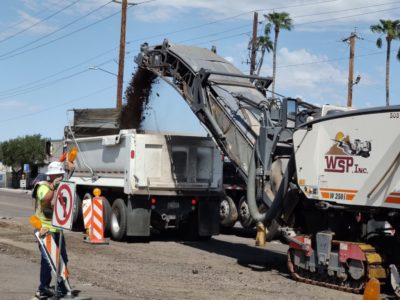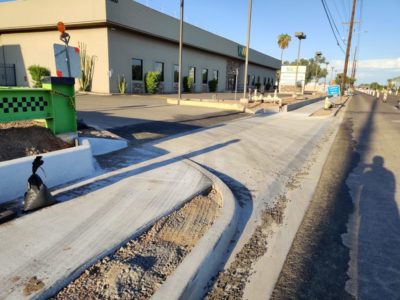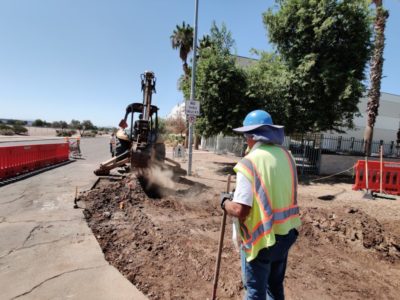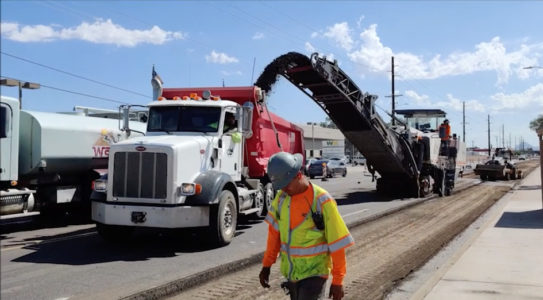PROJECTS
Wastewater, Water, Transportation, Educational, Marketing, Private, and Landscape Projects
CAMELBACK ROAD RECONSTRUCTION AND WATERLINE INSTALLATION, 43RD AVENUE - 51ST AVENUE STREET TRANSPORTATION | WATER
WATER | RECONSTRUCTION | WATERLINE | ARTERIAL ROAD | ADA
PROJECT OVERVIEW
This project replaced one mile of waterline beneath a major urban arterial roadway and improved travel conditions with roadway reconstruction. The scope included new sidewalks, driveways, and ADA improvements. The impact to businesses was significant, especially those that had one driveway, and reduced lanes and open trenches made tight turns extremely difficult for semi-trucks.
YPMO provided Design and Construction Phase PIO services. We conducted business outreach, collected contact information, discussed the construction activities and schedule, closures, and detours. The project was plagued with unknown underground utilities, resulting in water outages.
Throughout the COVID outbreak in 2020, YPMO’s business outreach kept owners informed of restrictions and schedule via digital channels. The original project duration was July 2019 through February 2020, however utility issues and material delays led to a July 2020 final completion.
Project Dates: January 2020 – July 2020
OWNER
City of Glendale
PROJECT LOCATION
Camelback Road, 43rd Avenue – 51st Avenue
SERVICES
-Project Hotline
-Construction Notices
-Business Outreach
-Email Updates
-PI Coordination
-Meeting Minutes
PROJECT TEAM
-Combs Construction
DESIGN
N/A
CONSTRUCTION
$2.2M (PIO Services: $19,560 / Final Cost: $34,120)





